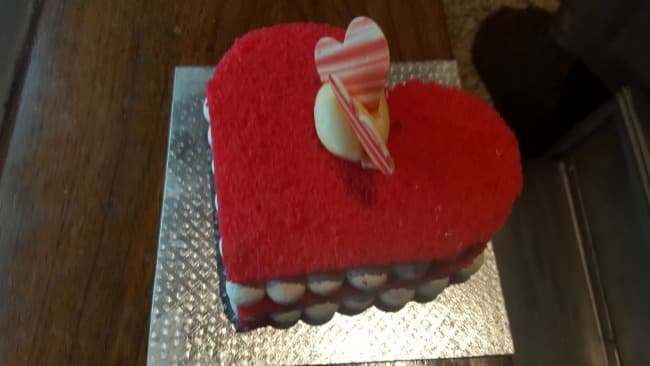
Today’s blog comes from the heart.
Angina to be specific.
For those of you unlucky enough to have had angina, you know how concerning it is. Angina (angina pectoris) is the sensation of pain in the chest of varying degrees. The pain can spread to the shoulders and arms, causing an inadequate blood supply to the heart. It is often considered a precursor to a heart attack, and this is especially so if you’ve had a stroke or cardiac event in the past.
Interestingly, heartburn can also feel like angina and visa-versa. A clear-cut diagnosis is important to pinpoint exactly what is going on; once you know, you can apply the proper protocol.
I have some personal experience in dealing with matters of the heart such as this one. Read “My Dad and the Dead Cardiologists” and my podcast entitled, “Shut UP!” to learn homeopathic remedies relating to cardiac conditions.
In addition to what I present in these articles, I want to share a medicine specifically intended for cases of angina that are stubborn and frequent.
Take Howard, my 89-year-old relative who has had a heart condition for years. He’d been taking the Banerji Protocol Lachesis 200 every other day to address his post-stroke palpitations and breathlessness. He was also taking Crataegus, mother tincture, 5 drops twice daily on my recommendation.
But after a recent stroke, he began to suffer from regular angina. As an aside, so mild was the stroke that it confused several cardiologists in two university-setting cardiac wards. Was it really a stroke or something else, they wondered? While he appeared to be having the stroke, he was given Aconitum 200 every few minutes at home and in the ambulance. I believe that was the reason he didn't go into a full CVA.
But because of fear, in spite of his continuous good results from having relied on homeopathy, the doctors convinced him to use their medical wares.
So for several months, Howard took the commonly prescribed angina medication, Nitroglycerine. It rid him of pain for a week or two but then—as is common with drugs of commerce—he began to need a stronger and stronger dose with each passing week to keep the symptoms subdued.
The only recommendation that the cardiologist had was to wear a Nitroglycerine patch all day long. (The assumption being that his blood was Nitroglycerine-deficient?)
This is the exact opposite of homeopathy. Rather than helping, traditional drugs pull the person further and further away from a resolution or cure down a toxic little trail of demise.
Homeopathic medicines, on the other hand, need to be taken with less and less frequency and cause no toxic consequences. They often also soften concomitant symptoms that the person doesn’t necessarily associate with the condition. In Howard’s case, after taking the prescribed drugs, he was weak, sleepless, irritable, sometimes confused, and anxious.
In other words, while dutifully taking the drugs, he subsequently lost quality of life.
And so Howard came back to me.
I so wish he had skipped the unnecessary suffering and reached out to me from the beginning!
I taught him the angina protocol, Cimicifuga 30, taken twice a day.
The evening of the first day (after his second dose), he had absolutely no angina for the first time in over three months and his blood pressure normalized.
He kept a record of his symptoms, and on each day he would email, “NO ANGINA TODAY!” and “Another great day!!!!”
Each day was filled with numerous happy exclamation points.
I wasn’t surprised because I’ve come to expect these kinds of results.
Howard continued the homeopathics twice daily; on the tenth day, he reported that there’d been some minor pain in the chest, but nothing like before, and it brought no concern.
Day 11 and 12 were again excellent days for him.
At some point during that first week of taking Cimicifuga 30, he ceremoniously ripped the Nitroglycerine patch from his shoulder.
It became clear to him that it simply wasn’t helping.
He’d found something better that no cardiologist in the U.S. knows about.
Because he has a history of stroke, he is now on Cimicifuga 30 twice a day, and Lachesis 200 every other day, as well as Crataegus mother tincture twice daily.
His sleep is fully restored.
No more lonely, anxiety-ridden nights. No more weakness during the day filled with impending dread.
This is why I urge you to take heart like Howard did by learning more about this worldwide movement of bringing homeopathy into every home.
Find someone to help in your circle of friends and relatives and watch their lives restore.
Meanwhile, Happy Valentine's Day!
Warmly,
P.S. Consider starting a homeopathy study group so you can treat your family yourself.
Call today and learn how homeopathy might just be the missing piece in your health strategy.
Joette is not a physician and the relationship between Joette and her clients is not of prescriber and patient, but as educator and client. It is fully the client's choice whether or not to take advantage of the information Joette presents. Homeopathy doesn't "treat" an illness; it addresses the entire person as a matter of wholeness that is an educational process, not a medical one. Joette believes that the advice and diagnosis of a physician is often in order.
We've provided links for your convenience but we do not receive any remuneration nor affiliation in payment from your purchase.
The Author disclaims all liability for any loss or risk, personal or otherwise incurred as a consequence of use of any material in this article. This information is not a substitute for professional medical advice, diagnosis or treatment.